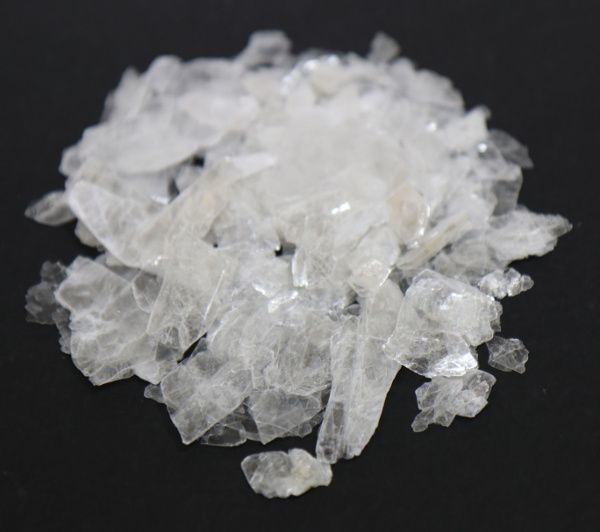Your Basket is currently empty!
The Ultimate Guide To Synthetic Mica in five minutes
What is synthetic mica?
Synthetic mica also known as synthetic fluorphlogopite is a mineral. This fluorine substituted mineral is composed of magnesium aluminum silicate sheets that are weakly bound together by potassium. Synthetic mica is manufactured at very high temperatures.

Synthetic mica pigments are very similar to natural mica which is found in rocks as a mineral. The difference is that the base used to create synthetic mica pigments is synthetic fluorphlogopite i.e. a synthetic form of the naturally occurring mineral.
Synthetic fluorphologpite does have some advantages over naturally occurring mica. Natural mica starts off as from off-white to black or brown colours. The problem with this is the mica already has a base colour before other pigments are added to it. This potentially affects the final colour of the finished pigment and can also affect the ability to produce consistent colours over time. Synthetic micas are brighter and cleaner because the starting base colour is white. Pigments are layered on top of the synthetic mica powder. The mica is then heated at a high temperature to create the sparkling and metallic effect.
Benefits of synthetic mica
Synthetic mica is always white and therefore when a product is created with it the colour will always be consistent leading to more stable and reliable pearl products.
Unlike natural mica synthetic mica is more flexible in its structure so it is less fragile. This is particularly advantageous due to the rigorous methods of mixing and dispersion used in cosmetic manufacture and is less likely to break.
Synthetic mica platelet/particle sizes are created to be uniform in size and thickness. This enables more control over the final properties of a product when formulating because you do not get the inconsistent sizes associated with natural mica.
Flourphlogopite synthetic mica is more translucent which allows light to pass through its structure. This translucency makes final synthetic mica pigments more lustrous, pearl like and the final colours are noticeably brighter and more accentuated.
A major benefit is that due to its stability synthetic mica stores very well and is less susceptible to alteration due to storage conditions.
Less cosmetic restrictions on synthetic micas especially in eye-makeup
Synthetic mica is not subject to the same restrictions as natural mica. Natural mica is restricted in eye-makeup by the FDA for particle sizes less than 150 microns whereas synthetic mica does not have these restrictions.
Ethical concerns
We do our utmost to ensure that our mica is ethically sourced and is cruelty free and work closely with our suppliers to ensure that this is the case. Although much has been done in the industry to improve the working conditions of those who mine mica and to address child labour involved with mica production some people prefer to avoid natural mica altogether.
However bear in mind that synthetic mica does have its own implications especially for energy usage which involves fossil fuels. Large amounts of electricity are used in the manufacturing process of synthetic mica which is an energy intensive exercise. It has also been proposed that the overall environmental impact of synthetic mica is 6.5 greater than that of natural mica.
We understand that there are considerations relevant to the use of both natural and synthetic mica and these issues are complex and nuanced. That is why we offer our customers a range of natural and synthetic micas so that they can make an informed choice.
Micamoma synthetic micas at a glance
Micamoma has one of the largest ranges of synthetic micas in the UK. We decided to stock synthetic micas because of their superior lustre and bright colours and we also wanted to give our customers an alternative to natural mica.
Most of our synthetic micas are in the 10-100 micron particle range. This is the standard size for most applications. This particle size also demonstrates the greatest coverage if you are hoping to achieve a more opaque effect.
The 10-100 micron particle range is ideal for colouring paint, cold process soap, melt and pour soap, makeup including eye shadow, lipstick, bronzers, highlighters, bath bombs (please use polysorbate-80 to evenly disperse colour).
Our synthetic ColourShift range is available in 20-100 microns and these micas have a white base with an interference shift of gold, green, blue, red and violet. They are very lustrous and add an additional tone to the base colour of your project without altering the main colour. These pigments work especially well in nail polish where you might have a green base colour but want to add some violet colour shift to it to create a green violet two-tone effect.
A number of our synthetic micas are in the 60-350 micron range and can be found under the Flakes section on the site. These larger synthetic micas are ideal for creating more sparkle. They are used by our customers to add glittery effects to nail polish, resin art and eye-shadows to name a few. Synthetic micas above 150 microns do not have the same restrictions in cosmetics as natural mica at this size.
A few of our synthetic micas are even larger in size at 200-700 microns. They can also be found in the Flakes section of the site. These synthetic micas are often used in nail polish, resin art projects and makeup amongst all the other creative ways that are out there.
